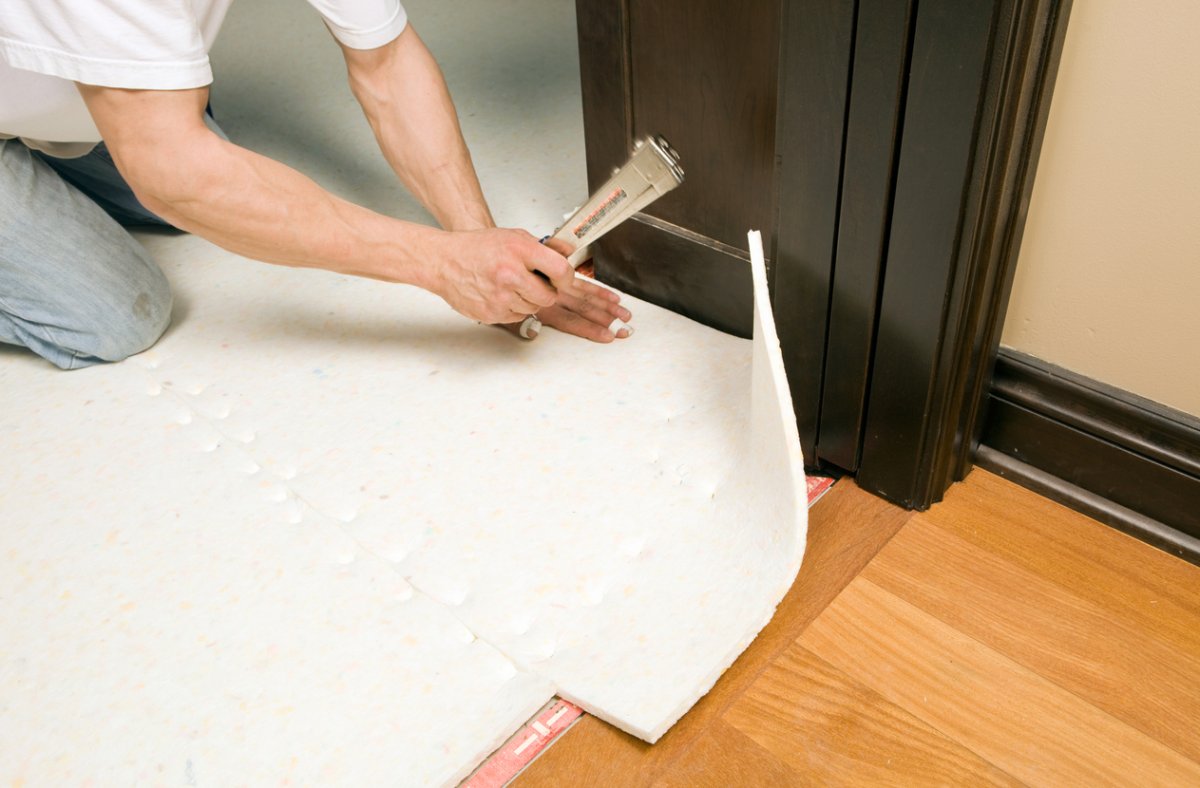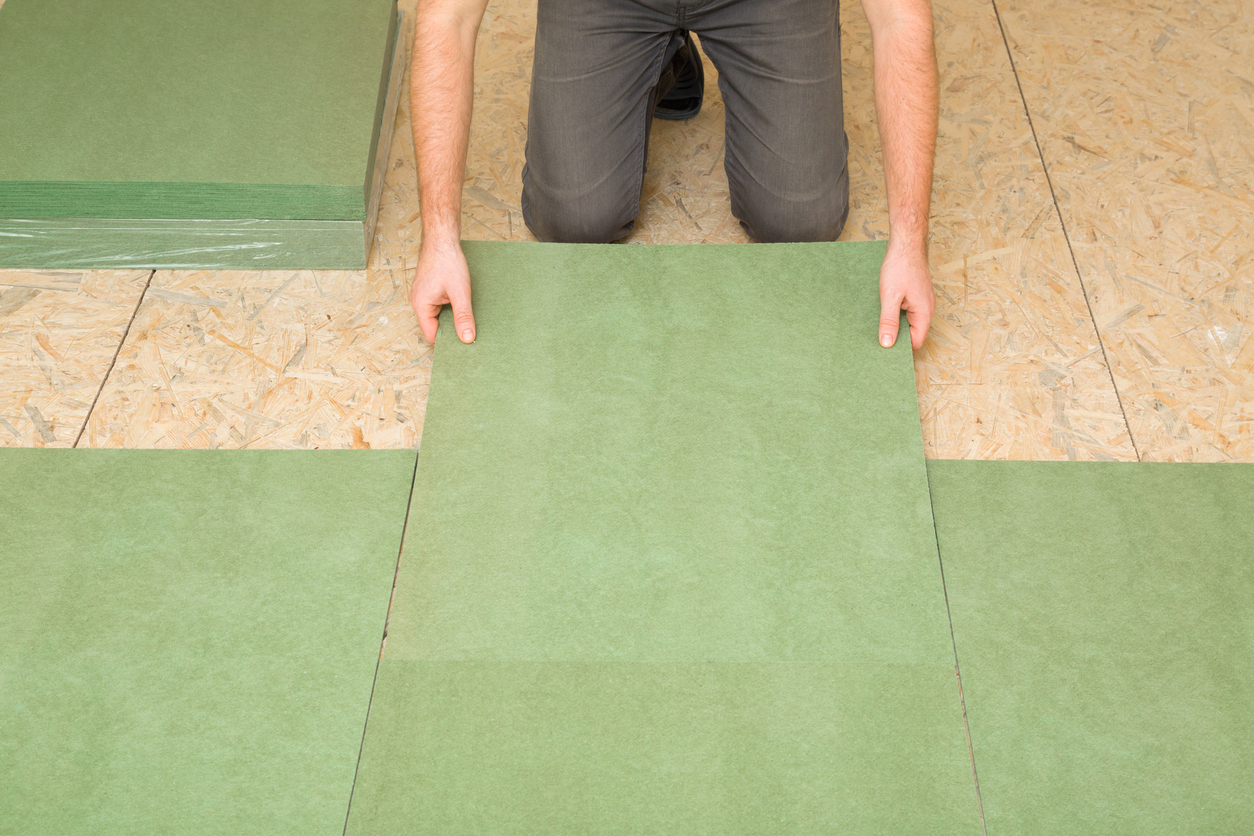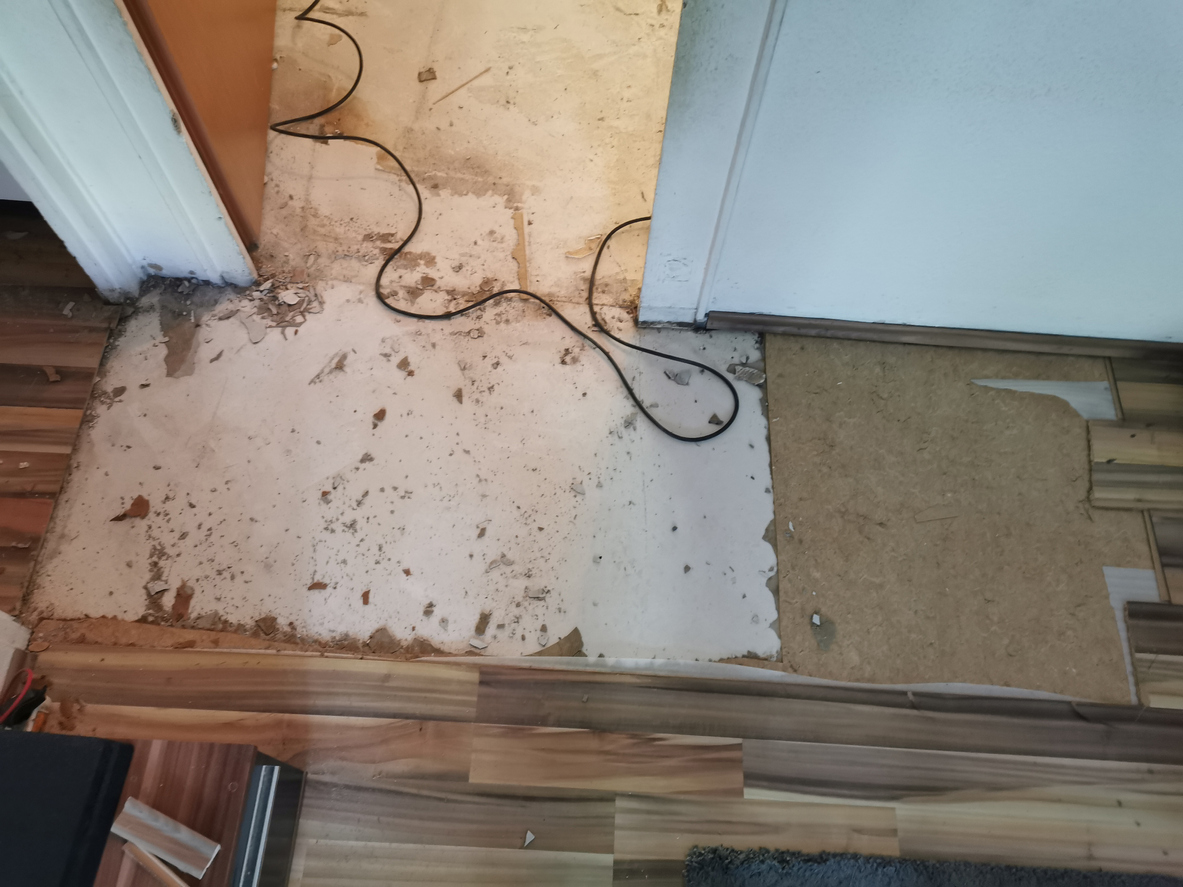

We may earn revenue from the products available on this page and participate in affiliate programs. Learn More ›
Q: I noticed recently how squeaky my floors are when I walk on them. Is this a sign my flooring or subflooring needs to be redone? How do I know who to hire to replace subfloor?
A: Squeaky floors can definitely be a sign that the subflooring needs to be replaced—but before eyeing new plywood, it may be wise to look more closely for the root of the issue. Issues such as excess moisture can cause a subfloor to fail before its time. Whether replacing the subfloor in a mobile home or quoting the cost to replace a bathroom floor and subfloor, a flooring contractor can help with any home’s specific flooring needs. And while most instances call for a flooring contractor to replace subfloor under a wall or other areas in a room, more serious situations may call for the help of a structural engineer. For those wondering when to replace a subfloor or who to hire to replace a subfloor, the following points can help homeowners in need.
A flooring contractor can replace subfloor.
Subfloor replacement is no minor task, which is why a flooring contractor is likely the best bet for this project. A flooring expert will be able to identify any uneven or sloping sections and make adjustments so that whatever flooring is laid on top of the subfloor sits nicely and evenly. Contractors partially can replace subfloor from underneath if there is access; they’ll need to inspect the joists and loosen screws, and then the main job of repairing and replacing subfloor is done from on top. Whether a homeowner is replacing rotted subfloor resulting from water damage or patching smaller sections that have deteriorated over time, a structurally sound, flat surface is required to serve as the support for tile, hardwood, or vinyl flooring. Hiring a flooring contractor will ensure the best outcome so there won’t be a need to replace the subfloor again anytime soon.
It may be possible to only repair certain areas of the subfloor.
If the home hasn’t experienced any major flooding or the majority of the floor is in decent shape, a homeowner may only need to repair small sections of the subfloor. In this case, it may be possible to tackle DIY subfloor replacement with a few tools and materials. Subfloor replacement costs can range from $3 to $10 per square foot, depending on what material is used, and labor costs tend to add about $25 to $30 per hour. DIY-ing the project can help save on labor costs, as long as a homeowner has the experience, time, and tools to do the job right the first time. Mistakes may require a professional’s help to fix, which will unnecessarily make the entire project more expensive than if a homeowner had hired a contractor from the get-go.

Signs that a subfloor needs to be replaced or repaired are sagging and squeaking floors.
The health of the subfloor is essential to having a safe walking surface, which is why it’s wise to pay attention to signs that it needs to be replaced. If residents notice that the floors are visibly sagging or squeaking when walking, it may be time to contact a contractor to replace subfloors. Other telltale signs include:
- Cupped flooring that curls at the ends due to excess moisture
- Cracked or popping tiles
- Noticeable moisture or a moldy, mildewy smell near flooring
These are common signs that the subfloor needs to be replaced or at least inspected to see if replacement is recommended. An expert can give better insight into the extent of the damage.
Flooring contractors can also identify and repair failing joists.
Sometimes the subflooring itself isn’t the problem. Among the layers under the finish floor are the joists. Joists are the very bottom layer of flooring that are installed parallel to the floor to provide support and structure. They are usually made of wood or steel and are key to a level, sound floor. Wooden joists are subject to issues such as moisture and termites. If a homeowner notices significant sagging, tilting or sinking, it may be the joists that need replacing, which a flooring expert can identify.
A structural engineer’s services may be required if there are issues with a sagging floor.
Severely sloped or tilted floors often involve more than just a subfloor problem, which is why a structural engineer’s services may be required. A flooring contractor will be able to identify whether the problem is beyond their scope and recommend an engineer. If it’s a structural issue with the foundation of the home, a certified engineer is going to be the best person to assess the extent of the issue and the next steps to correct it. Depending on the cause of the home’s problems, the cost to replace a subfloor could be about $400 to almost $3,000.
If the subfloor had water damage, a plumber may be required to manage any leaks.
In the event that the subflooring needs to be replaced due to a leaky pipe or plumbing, it’s helpful to call one of the best plumbing services to identify the source of the leak and make repairs. This can help prevent the problem from happening again, and a plumber can likely point out any signs that other pipes need work. If there is an active leak, a plumber can also temporarily turn off the water supply to keep the problem contained and the water bill from skyrocketing.

Subfloor exposed to humid or moist conditions likely needs to be replaced more frequently.
The location of the home also helps determine what kind of care or treatment the subfloor will need. For example, homes in more humid climates that experience moist conditions may need to have their subflooring replaced more frequently, since exposure to moisture can compromise the integrity of the material. High levels of exposure to moisture can also lead to mold growth, so controlling the moisture in the air through dehumidifiers may be helpful in extending the longevity of the subflooring.
